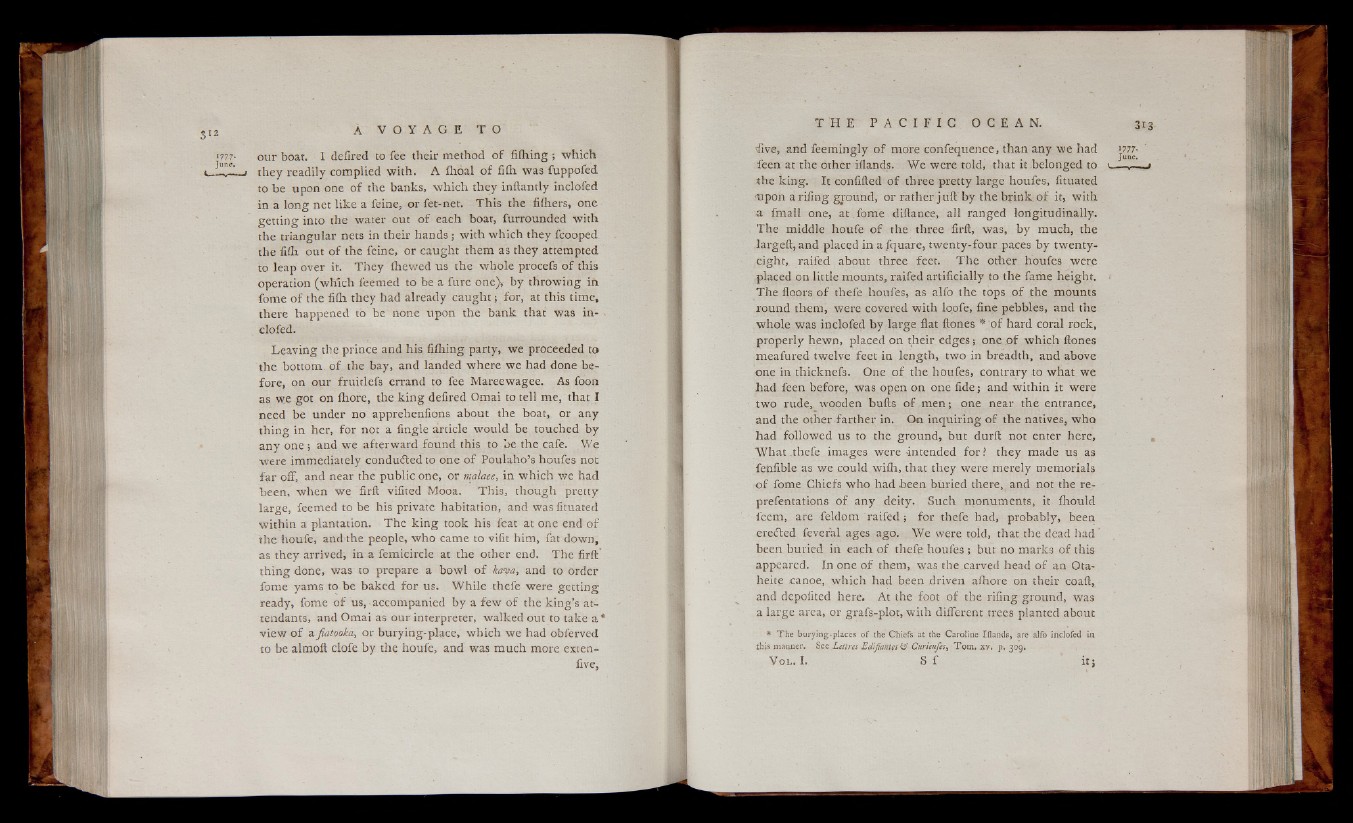
'777- our boat. I defired to fee their method of fiihing ; which
they readily complied with. A ilioal of fiih was fuppofed
to be upon one of the banks, which they inftantly inclofed
in a long net like a feine, or fet-net. This the fifliers, one
getting into the water out of each boat, furrounded with
the triangular nets in their hands ; with which they fcooped
the fiih out of the feine, or caught them as they attempted
to leap over it. They fhewed us the whole procefs of this
operation (which feemed to be a fure one), by throwing in
fome of the fiih they had already caught; for, at this time,
there happened to be none upon the bank that was in- -
clofed.
Leaving the prince and his fiihing party, we proceeded to
the bottom of the bay, and landed where we had done before,
on our fruitlefs errand to fee Mareewagee. As foon
as we got on fhore, the king defired Omai to tell me, that I
need be under no apprehenfions about the boat, or any
thing in her, for not a fingle article would be touched by
any one ; and we afterward found this to be the cafe. We
were immediately conduced to one of Poulaho’s houfes not
far off, and near the public one, or malaee, in which we had
been, when we fuff vifited Mooa. This, though pretty
large, feemed to be his private habitation, and wasfituated
within a plantation. The king took his feat at one end of
the houfe, and the people, who came to vifit him, fat down,
as they arrived, in a femicircle at the other end. The firil
thing done, was to prepare a bowl of kaya, and to order
fome yams to be baked for us. While thefe were getting
ready, fome of us,-accompanied by a few of the king’s attendants,
and Omai as our interpreter, walked out to take a*
view of a fiatooka, or burying-place, which we had obferved
to be almoft clofe by the houfe, and was much more extenfive,
five, and feemingly of more confequence, than any we had >777-
feen at the other iilands. We were told, that it belonged to < _
the king. It coniifted of three pretty large houfes, fituated
'upon a rifing ground, or rather juit by the brink of it, with
a fmall one, at fome diilance, all ranged longitudinally.
The middle houfe of the three firil, was, by much, the
largeil, and placed in a fquare, twenty-four paces by twenty-
eight, raifed about three feet. The other houfes were
placed on little mounts, raifed artificially to the fame height. 1
The floors of thefe houfes, as alfo the tops of the mounts
round them, were covered with lopfe, fine pebbles, and the
whole was inclofed by large flat Hones * of hard coral rock,
properly hewn, placed on their edges; one of which ftones
meafured twelve feet in length, two in breadth, and above
one in thicknefs. One of the houfes, contrary to what we
had feen before, was open on one fide; and within it were
two rude, wooden buils of men; one near the entrance,
and the other farther in. On inquiring of the natives, who
had followed us to the ground, but duril not enter here,
What .thefe images were -intended fo r ! they made us as
fenfible as we could wiih, that they were merely memorials
o f fome Chiefs who had been buried there, and not the re-
prefentatipns of any deity. Such monuments, it ihould
feem, are feldom raifed ; for thefe had, probably, been
erected feveral ages ago. We were told, that the dead had'
been buried in each of thefe houfes ; but no marks of this
appeared. In one of them, was the carved head of an Ota-
lieite canoe, which had been driven afhore on their coaft,
and depofited here. At the foot of the rifing ground, was
a large area, or grafs-plot, with different trees planted about
* The burying-places of the Chiefs at the Caroline Iilands, are alfo inclofed in
this .manner. See Lettr.es Edifiantes & Curieufes, Tom, xv. p, 309.
V o l . I. S f i t ;